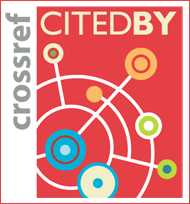ISSN : 1226-7155(Print)
ISSN : 2287-6618(Online)
ISSN : 2287-6618(Online)
Periodontopathogen LPSs Regulate MicroRNA Expression in Human Gingival Epithelial Cells
(received May 11, 2011 ; revised August 3, 2011 ; accepted August 23, 2011)
Abstract
Periodontitis results from the activation of host immune and inflammatory defense responses to subgingival plaquebacteria, most of which are gram-negative rods with lipopolysaccharides (LPSs) in their cell walls. LPSs have been known to induce proinflammatory responses and recently it was reported also that they induce the expression of microRNAs(miRNAs) in host cells. In our current study therefore, we aimed to examine and compare the miRNA expression patterns induced by the LPSs of major periodontopathogens in the human gingival epithelial cell line, Ca9-22. The cells were treated with 1 μg/ml of E. coli (Ec) LPS or 5 μg/ml of an LPS preparations from four periodontopathogens Porphyromonas gingivalis (Pg), Prevotella intermedia (Pi), Aggregatibacter actinomycetemcomitans (Aa), and Fusobacterium nucleatum (Fn) for 24 h. After small RNA extraction from thetreated cells, miRNA microarray analysis was carried out and characteristic expression profiles were observed. Fn LPSmost actively induced miRNAs related to inflammation, followed by Aa LPS, Pi LPS, and Ec LPS. In contrast, PgLPS only weakly activated miRNAs related to inflammation. Among the miRNAs induced by each LPS, miR-875-3p,miR-449b, and miR-520d-3p were found to be commonly up-regulated by all five LPS preparations, although atdifferent levels. When we further compared the miRNA expression patterns induced by each LPS, Ec LPS and PiLPS were the most similar although Fn LPS and Aa LPS alsoinduced a similar miRNA expression pattern. In contrast,the miRNA profile induced by Pg LPS was quite distinctivecompared with the other bacteria. In conclusion, miR-875-3p, miR-449b, and miR-520d-3p miRNAs are potential targetsfor the diagnosis and treatment of periodontal inflammationinduced by subgingival plaque biofilms. Furthermore, theobservations in our current study provide new insights into theinflammatory miRNA response to periodontitis.
- 36-3-8.pdf3.52MB









